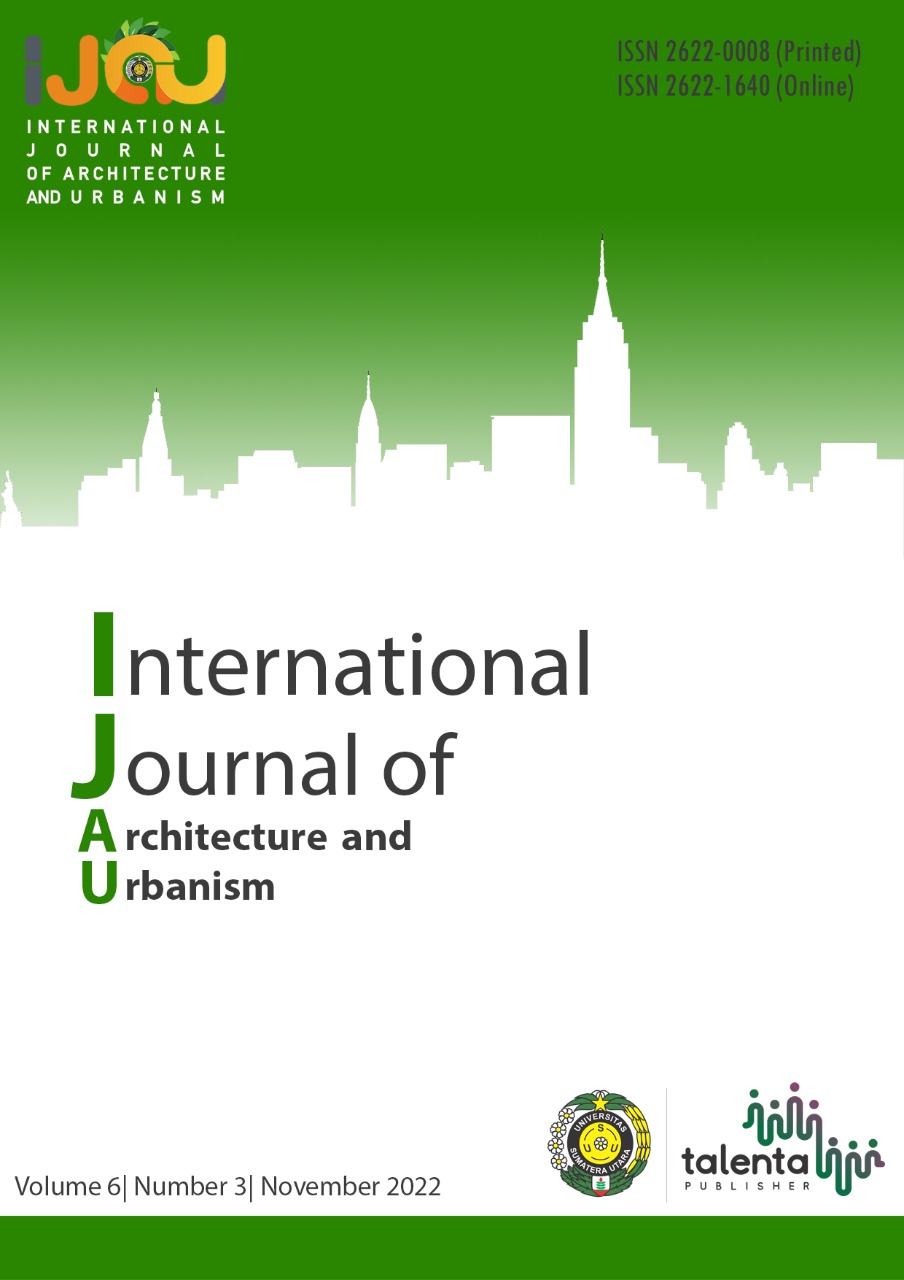Designing Smart Floating Village In Belawan With Ecological Architecture Approach
DOI:
https://doi.org/10.32734/ijau.v6i3.10404Abstract
Rising sea levels are essential issues due to global warming increasing every year. This leads to the potential for the amount of land to be reduced. One of the areas in Medan that is directly adjacent to the water is Belawan Subdistrict. Based on the data observation of water level in the Belawan sub-district, there is a significant level change every year. Some areas in the coastal area of Belawan have the possibility of drowning. To overcome this, Smart Floating Village is designed as a floating settlement in the future. The method used to solve this design problem is through observation, literature studies, and precedent studies of similar projects that have been built. The analysis and study results obtained a large pontoon structure (VLFS) as the module's base used for floating settlements. Settlements based on large pontoon structure modules can have various activities such as housing and other community needs facilities. The Smart Village concept is also applied to this design to eliminate the perception of the slum environment in coastal residential areas. To connect the idea of a smart village and floating settlements, an ecological architecture approach is needed to maintain a balance between humans and the environment. This research is expected to be a further discussion study for further research on floating settlements that apply the innovative village concept and can be helpful in architectural science regarding case studies and similar approaches.
Downloads
Downloads
Published
How to Cite
Issue
Section
License
Copyright (c) 2022 International Journal of Architecture and Urbanism

This work is licensed under a Creative Commons Attribution-ShareAlike 4.0 International License.


.png)










